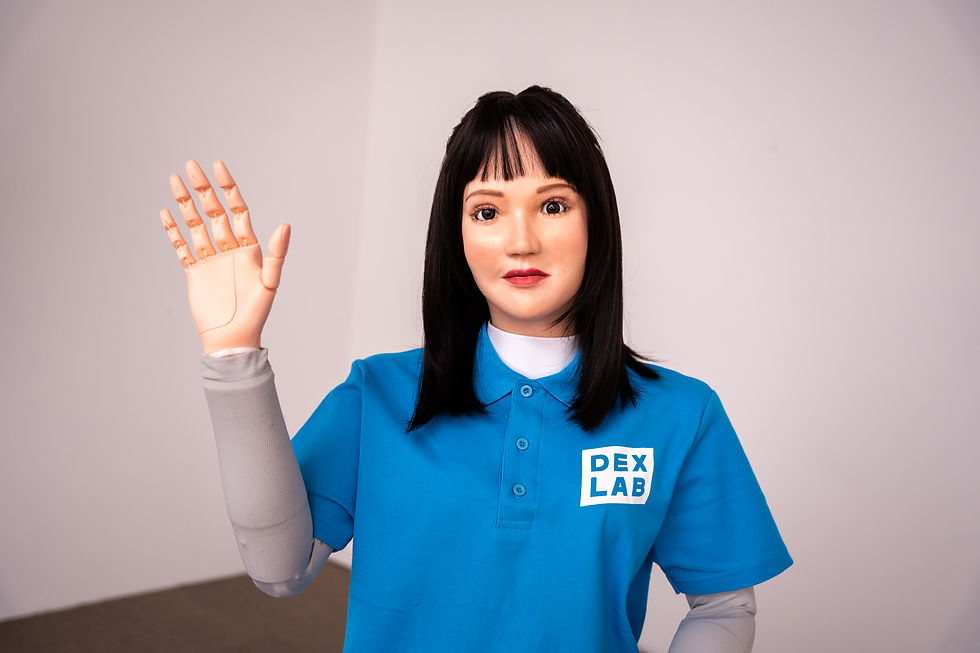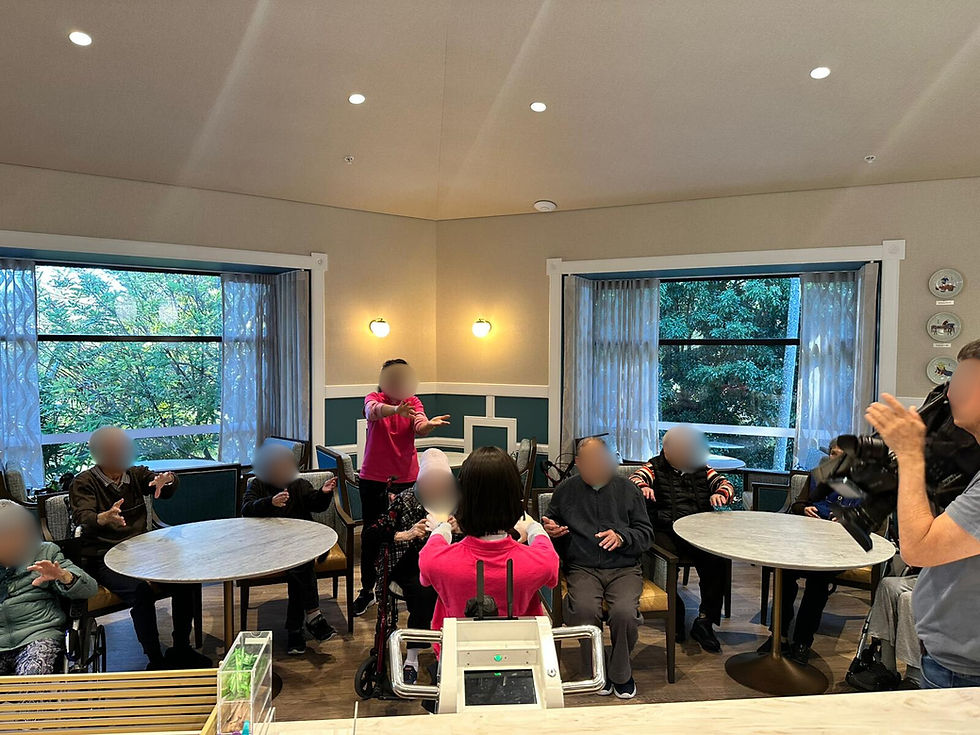Why Elder Care Needs More Automation and How Social Robots Can Help
- Benjamin Lee
- Nov 22, 2023
- 4 min read

Image credit: depositphotos.com
Singapore stands at a pivotal crossroads in the realm of elder care. As the nation navigates the double-edged sword of a rapidly ageing population and a declining workforce, the challenges seem insurmountable. Traditional caregiving models, which once relied heavily on familial support and community outreach, appear less viable each year.
However, amidst these challenges lies a beacon of hope: automation and technological advancements, particularly in social robotics.
As we delve deeper into the intricacies of Singapore's elder care landscape, we uncover the urgent need for innovation and the tremendous potential that robots like Dexie hold in reshaping how we care for our seniors.
Challenges in the Current Elder Care Framework
A Shortage of Manpower
Singapore, like many developed nations, is grappling with an ageing population, which places a higher demand on elder care services.
Unfortunately, the nation still struggles with a shortage of elderly care workers. Frequently, allied healthcare professionals have to cope with long work hours and heavy patient loads, which leads to burnout and high rates of turnover.
The staffing shortages have also had a ripple effect on the healthcare system. Overworked staff might be unable to provide comprehensive care, potentially resulting in the elderly not receiving the care they need. This includes aspects such as social interaction, mental stimulation, and emotional support, all of which are crucial for maintaining the overall well-being of elderly individuals.
In addition to the physical demands of the job, caregivers also face emotional challenges as they form close bonds with older adults under their care. Witnessing the decline in health or the passing of a patient can take a significant emotional toll on caregivers, potentially leading to compassion fatigue.
The Growing Elderly Population in Singapore
By 2030, it is estimated that one in four Singaporeans will be over 65, making Singapore one of the world's most rapidly ageing societies. Combined with the nation's decreasing fertility rates and shrinking population, this presents a profound challenge to the elder care infrastructure.
There may need to be more than the traditional models of familial support and community caregiving to meet the escalating demand. Elderly care facilities will face capacity issues, potentially leading to overcrowded establishments and compromised care standards.
Moreover, as the workforce shrinks, there will be fewer professionals entering the elder care sector, exacerbating workforce shortages. This demographic shift demands immediate and innovative responses to ensure that Singapore's elderly receive the comprehensive, quality care they deserve.
Embracing technological solutions, such as integrating social robots, will become imperative to address these challenges head-on and pave the way for a sustainable elder care model in the country.
Customised and Consistent Care
Every elderly individual has unique needs, preferences, and routines. Traditional caregiving, especially in large facilities, sometimes needs help to provide personalised care consistently due to staffing constraints and human errors.
This disparity means that caregivers, despite their best intentions, may not always have the capacity to recall and cater to the specific preferences of each resident.
Whether it's remembering one resident's penchant for a particular type of music or another's evening ritual of a specific herbal tea, these details, though minute, significantly impact the quality of life for the elderly.
Moreover, the stress and fatigue from managing heavy patient loads can inadvertently lead to human errors or oversights. Such challenges, while understandable given the resource constraints, underscore the pressing need for innovative solutions to bridge the gap.
The Case for Automation in Elder Care
In the face of the challenges of an ageing population and a concurrent staffing shortage, Singapore's elder care system is at a critical juncture. Fortunately, technology, specifically social robots, is a viable and promising solution. Keep on reading to see why.
1. Efficiency and Consistency
Automation, when thoughtfully integrated, can transform elder care and bring about significant improvements in terms of efficiency. Social robots, equipped with advanced features, can handle routine tasks around the clock without the limitations of breaks or fatigue.
For instance, while a caregiver might be juggling multiple responsibilities, a robot, with its conversational AI, could engage an elderly resident in their preferred language, offering both companionship and reminders.
This not only allows human caregivers to prioritise more specialised care but also ensures that each resident consistently receives attentive interaction, whether it's a chat in Mandarin in the early hours or a sing-along session with their favourite songs, regardless of staffing constraints
2. Emotional and Social Support
While robots may not replicate the profound emotional bonds that humans share, they offer a consistent avenue for social interaction, particularly during moments when human caregivers are managing multiple tasks.
With sophisticated artificial intelligence akin to Dexie's intuitive conversational abilities in Mandarin and English, these robots can facilitate calming interactions, which is beneficial for individuals with dementia.
Beyond just conversation, they can also immerse the elderly in engaging activities, such as leading a sing-along session with a cherished tune or hosting stimulating group games.
3. Scalability amidst a Shrinking Workforce
As Singapore grapples with a rising elder population and a shrinking workforce, expanding elder care facilities and services is a significant logistical hurdle.
Automation, particularly through the likes of social robots, offers a tangible solution to this scalability dilemma. Through features reminiscent of Dexie's multifaceted care program, which includes exercises, sing-along sessions, and group-based games, robots can undertake a myriad of routine tasks.
This not only ensures a diverse range of activities for the elderly but also significantly alleviates the burden on caregivers. With such robotic assistance, a single caregiver can oversee a larger group of seniors, ensuring each individual receives quality attention and care.
Closing Thoughts
As Singapore navigates the complexities of an ageing demographic and a limited elder care workforce, the need for innovation has never been clearer. While the challenges are significant, social robots like Dexie have the potential to make a difference.
By embracing the robotic revolution, Singapore is not only addressing the immediate challenges but also laying the groundwork for a sustainable, holistic, and compassionate elder care framework for generations to come.
As we move forward, it is paramount to remember that at the heart of all these technological advancements lies a simple, unchanging goal: ensuring the well-being and happiness of our cherished elderly community.



Your article astutely highlights Singapore's critical juncture in elder care, especially concerning the declining workforce and the urgent need for innovation. The potential of social robots like Dexie to fill these gaps is immense, moving beyond traditional models. It's crucial, however, that as we embrace these technologies, we also consider the complex ethical and social dynamics of human-robot interaction in such sensitive settings. Understanding how to best design and deploy these systems to genuinely enhance quality of life, rather than just provide functional support, is paramount. For more on the ethical considerations and best practices in this evolving field, exploring resources on human-robot collaboration in care can be incredibly insightful.